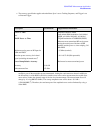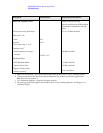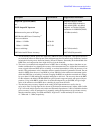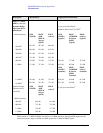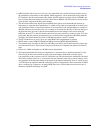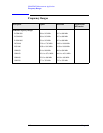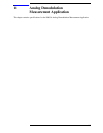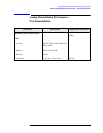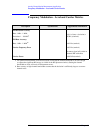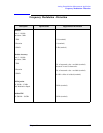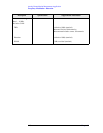
Chapter 10 141
GSM/EDGE Measurement Application
Measurements
b. ORFS standards call for the use of a 5-pole, sync-tuned filter; this and the following footnotes review
the instrument's conformance to that standard. Offset frequencies can be measured by using either the
FFT method or the direct time method. By default, the FFT method is used for offsets of 400 kHz and
below, and the direct time method is used for offsets above 400 kHz. The FFT method is faster, but has
lower dynamic range than the direct time method.
c. The direct time method uses digital Gaussian RBW filters whose noise bandwidth (the measure of
importance to “spectrum due to modulation”) is within ±0.5% of the noise bandwidth of an ideal 5-pole
sync-tuned filter. However, the Gaussian filters do not match the 5-pole standard behavior at offsets of
400 kHz and below, because they have lower leakage of the carrier into the filter. The lower leakage of
the Gaussian filters provides a superior measurement because the leakage of the carrier masks the
ORFS due to the UUT, so that less masking lets the test be more sensitive to variations in the UUT spec-
tral splatter. But this superior measurement gives a result that does not conform with ORFS standards.
Therefore, the default method for offsets of 400 kHz and below is the FFT method.
d. The FFT method uses an exact 5-pole sync-tuned RBW filter, implemented in software.
e. EDGE (others) means NSR 16/32QAM and HSR all formats (QPSK/16QAM/32QAM).
f. The dynamic range for offsets at and below 400 kHz is not directly observable because the signal spec-
trum obscures the result. These dynamic range specifications are computed from phase noise observa-
tions.
g. Offsets of 1.8 MHz and higher use 100 kHz analysis bandwidths.
h. The impulse bandwidth (the measure of importance to “spectrum due to switching transients”) of the
filter used in the direct time method is 0.8% less than the impulse bandwidth of an ideal 5-pole
sync-tuned filter, with a tolerance of ±0.5%. Unlike the case with spectrum due to modulation, the shape
of the filter response (Gaussian vs. sync-tuned) does not affect the results due to carrier leakage, so the
only parameter of the filter that matters to the results is the impulse bandwidth. There is a mean error of
−0.07 dB due to the impulse bandwidth of the filter, which is compensated in the measurement of ORFS
due to switching. By comparison, an analog RBW filter with a ±10% width tolerance would cause a
maximum amplitude uncertainty of 0.9 dB.







